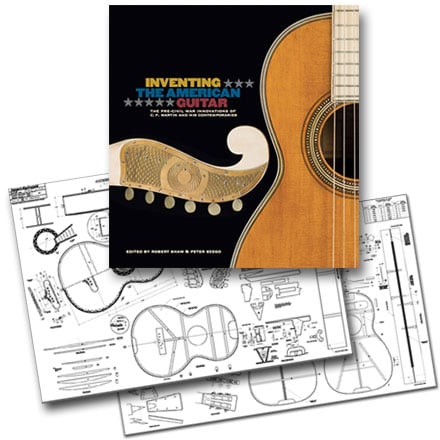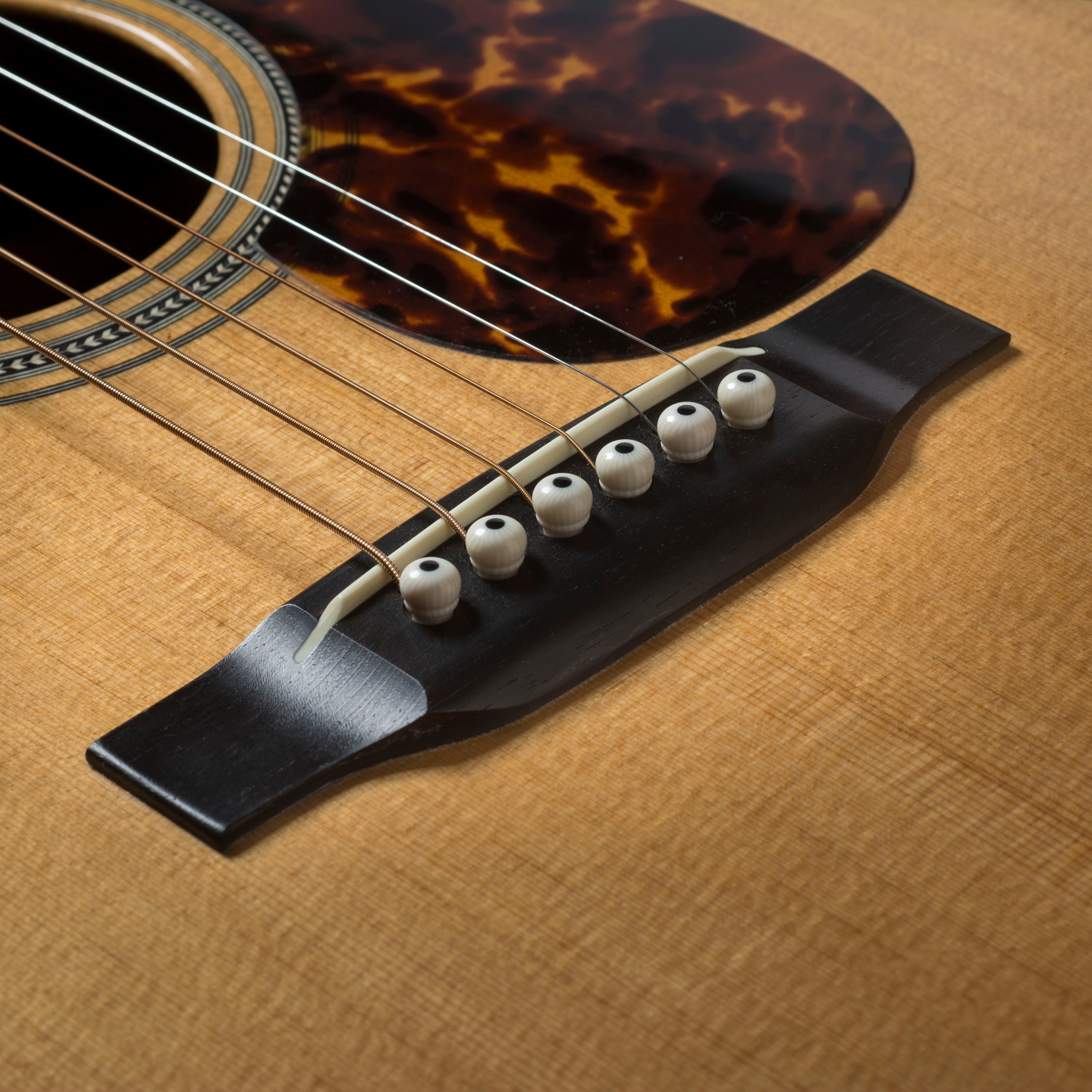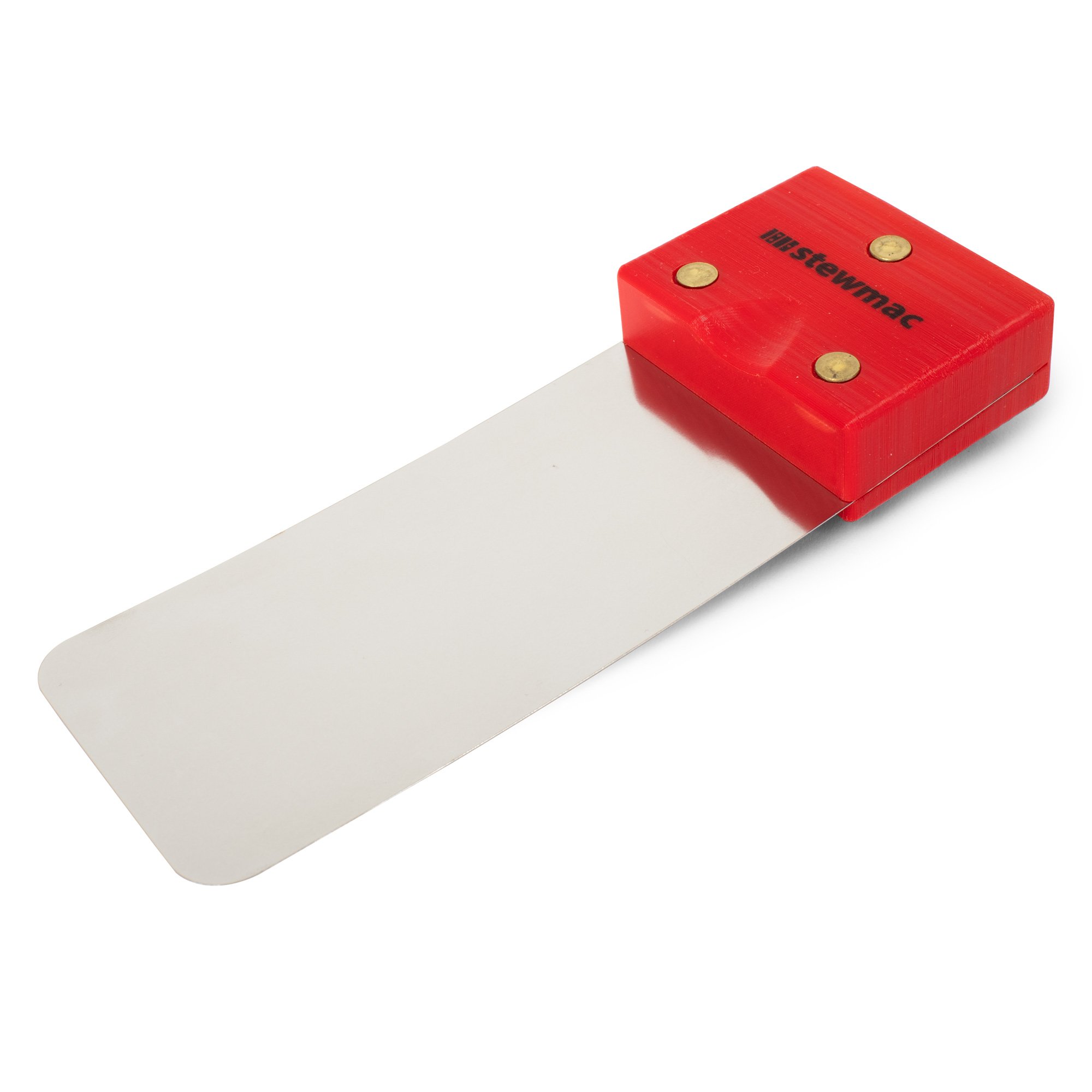Dick Boak of Martin Guitars talks about pre-war tenors, Part 2
Talking about troubles with these old guitars, and Dick reveals the guy responsible for those photo-reproduced fake tortoiseshell pickguards! He also discusses the history of the Martin pickguard. Check out Part 1 of the discussion here.
Video Transcription
[on-screen text reads: 1932 Martin O-18T]
Replacement bridge?
Dick Boak: I was thinking that this bridge might in fact be a replacement bridge, because I see a little bit of evidence of some scribing here. Of course, whoever did this repair did a beautiful job, so it's the exact same footprint. But from my experience, a lot of the early bridges, this little area here is softened with sanding, and not such a sharp defined line. But this is a replica. If it is a replacement, it's a very, very good, probably a Martin installed replica of the original bridge with the long saddle.
Dan Erlewine: It's so hard to get that, you have to do it with a scraper. I think somebody lowered the top of the bridge a bit with the saddle. And you're talking about a scribe mark around it?
Dick Boak: Yeah. Especially in the front of the bridge.
Speaker 3: Yeah, on the inside.
Dan Erlewine: Well, that's a tough one. Because it almost looks like it's never been off. It's a hell of a job.
Dick Boak: Yeah, It was type of job you would do. Perfection.
Dan Erlewine: That's right.
Dick Boak: Perfection.
Dan Erlewine: That's good ebony.
Lowering the action
Dick Boak: The normal thing with Martin guitars, especially pre truss rod Martin guitars, is that in time the top lifts slightly, and that comes up slightly. The action needs to be lowered. And the paradox about action is, in order to get a one millimeter lowering of action here, you need to lower it two millimeters at the saddle. So the saddle disappears pretty quickly in the process of lowering the action. And I'm sure that was the case here. That the saddle was lowered almost to its lowest possible point. Beautiful pickguard.
Nitrate pickguards
Dan Erlewine: What happened to pickguards? Why can't we get something like this anymore? I'm sure you guys have tried.
Dick Boak: Well, the problem with the nitrate pickguards is that they shrunk at a different rate than the top wood and often would cause a crack, right between this point and the bridge right here.
In fact, people call it the Martin crack, which is not very complimentary. But now we've been able to get this material once again, and it's actually a sandwich of the original nitrate material with acetate on the top and the back, and the acetate doesn't shrink up. And so we get the appearance of this type of pickguard without the shrinkage and the crack.
Dan Erlewine: So the computer generated pickguards are going to go by the wayside.
Dick Boak: Well, when you say computer generated, you're talking about looking at the pickguard and seeing a dot pattern of actually imprinting of... I take responsibility for that, because I was upset by what I call the pepperoni color pickguard. It was just a kind of reddish pepperoni color, and I didn't like them. So I found a shade of nitrate, and I took a photograph of it at high resolution, and the company that was making pickguards for us said that they could imprint that color and give us a more accurate representation of the pickguard. And I didn't realize that there was going to be a dot pattern. And people that have their little magnifiers [on-screen text reads: OptiVISOR Headband Magnifier from StewMac - Magnify what you're working on] have gone in and found that, and they don't like that. So we're pretty happy about the new nitrate laminated pickguards that at least have the right look with no dot pattern.
Dan Erlewine: I can't wait to see that.
How Martin installs pickguards
Speaker 3: Well, now these old ones would've been... It would've been glued to the bare wood and then finished over top of. Whereas most of them these days, the pickguard goes on top of the finish. Is that correct?
Dick Boak: It's much safer to prevent a crack in the guitar to apply it with self-adhesive. But yes, they would brush an adhesive onto the back of the pickguard and set it down onto the raw wood, and then bevel it slightly and then put it into lacquering. Which was very difficult because you often get little bubbles and bridging of lacquer at the edge of the pickguard. So it was very difficult.
Speaker 3: Huh.
Dan Erlewine: It's always my thought that they took the celluloid and compressed with acetone, maybe mixed with some vehicle. So it's actually sticking and gluing to the bare wood.
Dick Boak: Well, that's true of the acetate pickguards. Well, no, you're exactly right. Because they had these little things that looked like a cross, a little Christian Cross that they would set here. It was a pickguard locator. And so they would get it at the right angle, and they would... A little jar. They had a little jar of pickguard solvent, they called it. It didn't smell like acetone.
Dan Erlewine: Well, it could've been a bunch of things.
Dick Boak: It didn't have much of an odor to it. I remember that. They would brush it on the back and it would actually start to melt the pickguard. It would set it on the top, and they would put about three quarters of an inch thick metal weight with cork on the bottom so it wouldn't dent the guitar. On top of the guard and then set it aside overnight, and it would just melt its way right into the top.
Dan Erlewine: Because when you take them off, you see that. Were they doing that when you got the Martin?
Dick Boak: Oh yeah. Yeah. And wasn't until, I think sometime in the mid-eighties that the self-adhesive came in, and it was mostly a result of cracking problems and people referring to it as the Martin crack.
So we've replaced a lot of guards.
Dan Erlewine: Oh, the Martin crack.
Dick Boak: If we're replacing a guard on an old guitar now, what we'll do is remove the old guard. A lot of times they're black from the sixties and seventies. We remove the old guard and we'll respray a little bit of lacquer onto the top where the raw wood is, and level it and put a new self-adhesive guard in the exact same footprint as the old guard.
[on-screen text reads: Stewart-MacDonald - stewmac.com]






